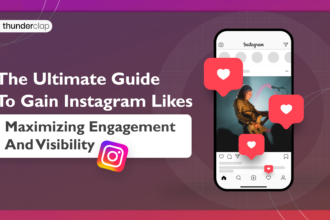A small mobile app is a really worthwhile addition to your main product. According to statistics, smartphone users spend most of their time in applications and not in the browser. So if you want to increase brand awareness, raise transactions, and engage more consumers, here’s a quick tutorial on how to make your own app using Flipabit.
How to Make Mobile Apps
The service has a simple and intuitive interface, so it won’t take you much time to figure out what’s what. If difficulties arise, you will find convenient manuals and even examples for creating specific projects on the platform’s official website.
Step 1: Download a constructor
Go to the site and download the constructor version for Mac or Windows. Install it on your device, launch it, log into your account, and get to work.
Step 2: Create a project
Creating a new project always starts with choosing a template. It will be the base for your application, which you can customize to your liking. You have a choice of templates for iOS (both iPhone and iPad), Android (both smartphones and tablets), Windows, and Mac. Once you have chosen the option that suits you, you will be given access to all the tools.
Step 3: Customize a template
The workspace is divided into three main parts: the settings for available items on the left and right and the main field in the center. The latter, in turn, is halved for light and dark modes. You can click directly on the item you need in the central part to start working with it or select it from the list on the left.
Resize elements, rearrange them, customize borders, change fonts, colors, backgrounds, and more. Additionally, you have a large selection of a wide variety of widgets:
- text;
- image;
- video;
- animation;
- audio;
- variables;
- 3D models, and so on.
You can work with layers, pages, styles, interactivity, and animations to make your application exactly what you want it to be.
Step 4: Preview the app
When you are finished making changes to the interface, take a look at how the final application will look on a screen. You can choose a mode (landscape or portrait) and a specific Windows, Android, Mac, or iOS device from an extensive list. You have the opportunity to create a responsive cross-platform app that adjusts to any screen and looks good on different devices.
Step 5: Export and publish
When your project is ready, export it for mobile or desktop devices. To publish it in digital stores, you need a developer account and all the corresponding certificates. You can find detailed information on this issue in the tutorials and manuals on the platform website. Once launched, you can quickly update the app as needed, thanks to the proprietary cloud service.
Platform Features
As you can see, creating your own application is not that difficult. If you want, you can figure out the details on the spot. If you have a basic knowledge of HTML, SQL, or JavaScript, the development process will be even faster. Using the service, you can create:
- weather applications;
- interactive catalogs;
- calendars;
- manuals;
- QR code scanners;
- magazines and online museums;
- store apps, and much more.
Platforms that let you build apps without having to write code from scratch give you access to easy-to-use tools that will meet most of your business needs.
Handy App by Your Own Hands
Building apps using such a platform is a great way to save money and time and get a product that meets your expectations. While this development method has some limitations, it is ideal for building simple apps and MVPs and testing your ideas and mobile marketing strategies.














